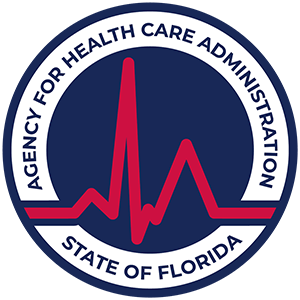Prescription Opioid Abuse Causes
Explore prescription opioid abuse causes, effects, and treatment options to understand this critical issue.

Understanding Prescription Drug Abuse
Impact on Specific Demographics
Prescription drug abuse, particularly of opioids, affects various demographics differently. For instance, older Black men have been disproportionately affected by the overdose crisis [1]. This demographic is increasingly vulnerable due to a combination of factors, including social, economic, and healthcare disparities.
Moreover, the prevalence of prescription opioid abuse is alarming. In 2016, over 20,000 deaths in the United States were reported due to an overdose of prescription opioids, establishing drug overdoses as the leading cause of death in U.S. adults under 50. Opioids are responsible for more than half of all drug overdose deaths [2].
GenderAge GroupDeaths from Opioid OverdoseMale25-34Over 10,000Male35-44Over 8,000Female35-44Over 3,000Male50+Increasing trend
Mechanism of Opioid Action
Understanding how opioids function in the body is crucial to grasping their potential for misuse. Opioids bind to and activate opioid receptors located in the brain, spinal cord, and other organs. This binding blocks pain signals and leads to the release of large quantities of dopamine, a neurotransmitter that plays a key role in the reward and pleasure centers of the brain [3].
The rush of dopamine reinforces the user’s behavior, generating a desire to repeat the experience. This action is a significant factor contributing to the development of addiction. The following table summarizes the effects of opioids on the body:
EffectDescriptionPain ReliefBlocks the transmission of pain signalsEuphoriaReleases high levels of dopamine, creating feelings of pleasureSedationInduces feelings of drowsiness and calmRespiratory DepressionCan slow breathing, which can lead to overdose
Understanding the causes and effects of prescription opioid abuse is essential for developing effective prevention strategies.
For more insight into the causes of prescription pill abuse, visit our article on causes of prescription pill abuse. Additional information regarding why prescription drugs are so commonly abused is also available.
Effects of Opioid Misuse
Opioid misuse has significant physical and psychological consequences. Understanding these effects is crucial in addressing the issue of prescription opioid abuse.
Immediate Physical Consequences
When opioids are misused, they can lead to severe immediate physical effects. Key symptoms include:
The following table outlines some immediate physical consequences of opioid misuse:
Immediate EffectDescriptionBreathing difficultiesSlowed breathing can lead to hypoxia.DrowsinessExcessive sedation may impair daily activities.Nausea and vomitingCommon side effects following misuse.Impaired judgmentDecreased ability to make sound decisions.
Long-Term Health Implications
Long-term misuse of prescription opioids can result in chronic health issues, both mentally and physically. Some of these implications include:
Long-term health implications of opioid misuse are summarized in the following table:
Long-Term EffectDescriptionWithdrawal symptomsSevere discomfort upon cessation of use.Opioid addictionCompulsive drug-seeking behavior.Cognitive impairmentMay affect memory and decision-making abilities.Increased toleranceHigher doses needed to achieve effects, heightening overdose risk.
Addressing the causes of prescription opioid abuse requires an awareness of both the immediate and long-lasting effects of misuse. For further insights into the driving factors behind this epidemic, consider reviewing our article on why are prescription drugs so commonly abused?.
Treatment Approaches for Opioid Addiction
Addressing opioid addiction requires a comprehensive approach that includes both medications and behavioral therapies. These treatment methods aim to support individuals in overcoming their addiction and reclaiming their lives.
Medications and Their Role
Medications play a crucial role in the treatment of opioid addiction. They interact with the same opioid receptors in the brain as prescription opioids, potentially mitigating the effects of opioids when misused. Various types of medications are available, which include:
Medication TypeMechanism of ActionExample MedicationsAgonistsMimic effects of opioidsMethadone, BuprenorphineAntagonistsBlock opioid receptorsNaltrexoneCombinationAgonist and antagonist propertiesBuprenorphine/Naloxone
According to the National Institute on Drug Abuse, effective treatments, including medications for opioid use disorder (MOUD), have shown positive results. Despite the availability of these treatments, only about one in four individuals with opioid use disorder receives specialty treatment, as noted by the American Psychiatric Association.
Behavioral Therapies
Behavioral therapies are also integral to the recovery process. They focus on modifying the attitudes and behaviors associated with drug use. These therapies aim to improve life skills and provide support through group or individual counseling sessions. Some common types of behavioral therapies used include:
Behavioral therapies serve to lessen the impact of addiction on personal and professional relationships. Individuals struggling with opioid abuse may experience disruptions in various aspects of their lives, prioritizing drug use over responsibilities [2].
By combining medications and behavioral therapies, individuals fighting prescription opioid addiction can receive a well-rounded treatment plan that addresses both the physiological and psychological aspects of their condition. Further information on the societal impact of opioid misuse, including economic factors, can be found in our section on prescription drug abuse statistics. Understanding the causes of prescription pill abuse is essential for fostering effective preventative measures and treatment strategies, as discussed in our article on causes of prescription pill abuse.
Addressing Opioid Overdose
In the context of prescription opioid abuse, one of the most critical issues is understanding and responding to opioid overdoses. Recognizing the signs of an overdose and the importance of immediate intervention with medications like naloxone can save lives.
Signs of an Overdose
Opioid overdose can occur when an individual ingests a sufficient quantity of the drug, leading to severe health consequences. Key symptoms to look for include:
Below is a summary of symptoms that indicate a potential overdose:
SymptomDescriptionSlowed BreathingBreathing may be less than 12 breaths per minuteUnresponsivenessPerson does not wake up or respond to stimuliPinpoint PupilsHighly constricted pupils, resembling specksWeak PulseSlow heartbeat, possibly less than 60 beats per minuteChoking SoundsNoises indicative of airway blockage
Recognizing these symptoms is vital for timely intervention. If an overdose occurrence is suspected, immediate action is essential.
Importance of Naloxone
Naloxone, also known as Narcan, is a critical medication for reversing opioid overdoses. It operates by binding rapidly to opioid receptors in the brain, effectively blocking the effects of opioids and reversing respiratory depression caused by overdose [3].
Naloxone Administration
The effects of naloxone typically manifest within two to three minutes. If the individual does not regain consciousness within this timeframe, a second dose may be administered by bystanders [4]. Naloxone is only effective if opioids are present in the person's system.
By having naloxone readily accessible and knowing how to use it, friends, family members, and even bystanders can play a crucial role in preventing fatalities due to opioid overdoses. Efforts to educate the public on recognizing overdose signs and the use of naloxone are essential in combating the crisis of prescription opioid abuse causes.
In situations where opioid misuse is prevalent, awareness and preparedness can save lives. For more information on the implications of opioid misuse, consider exploring prescription drug abuse statistics and related topics.
Opioid Abuse Statistics
Prevalence and Trends
Prescription opioid abuse remains a significant public health issue. Reports indicate that opioid misuse has steadily increased over the past two decades, affecting various demographics across the United States. In the early 2000s, there was a notable rise in the prescribing of opioid medications, contributing to the escalating rates of addiction and overdose.
In 2016, approximately 2.1 million Americans suffered from substance use disorders related to prescription opioids. This alarming trend underscores the need for increased awareness and preventive measures to address the causes of prescription opioid abuse. The current climate calls for effective strategies to reduce misuse and educate the public on safe medication practices. For more on the factors contributing to this issue, see our article on causes of prescription pill abuse.
Societal Costs
The societal impact of prescription opioid abuse is profound, with substantial financial implications. In 2007, the estimated total societal costs of prescription opioid abuse reached $55.7 billion. The breakdown of these costs is as follows:
Cost CategoryAmount (in billion $)Percentage of Total CostsWorkplace Costs25.646%Health Care Costs25.045%Criminal Justice Costs5.19%Total55.7100%
Workplace costs accounted for the largest share, with approximately $25.6 billion lost due to decreased productivity. Additionally, premature deaths from opioid overdose represented a significant cost component, amounting to $11.2 billion or 43.8% of workplace-related expenses, as detailed in reports [5]. Health care expenses associated with prescription opioid abuse totaled about $25.0 billion, driven primarily by excess medical and drug costs at $23.7 billion, which accounted for 94.9% of health care-related costs.
Criminal justice expenses contributed about $5.1 billion, with correctional facilities accounting for the largest portion at approximately $2.3 billion. This highlights the extensive strain that prescription opioid misuse places on various sectors of society. For further insights into the financial implications of prescription drug misuse, explore our article on prescription drug abuse statistics.
Genetic and Environmental Factors
Genetic and environmental influences play a significant role in one’s susceptibility to prescription opioid misuse. Understanding these factors can shed light on why some individuals develop substance use disorders while others do not.
Influence on Addiction Risk
Genetics significantly contributes to the risk of opioid addiction. Research indicates that approximately 50% of an individual's risk for developing an opioid use disorder is attributable to genetic factors. Studies illustrate that variations in genes such as the OPRM1 gene, which encodes the mu (μ) opioid receptor, influence how the body metabolizes and responds to opioids. This gene plays a crucial role in the brain's reward system, which governs feelings of pleasure and reinforcement [2].
Twin studies further reinforce these findings, revealing that around 54% of the genetic liability for opioid addiction is due to inherited factors. Other genetic variations, including those identified through genome-wide association studies (GWAS), have linked specific alleles in potassium-ion-channel genes (KCNC1 and KCNG2) and a glutamate receptor auxiliary protein (CNIH3) to opioid dependence [6].
The following table summarizes the approximate percentages reflecting the genetic contribution to opioid addiction:
Study TypeEstimated Genetic Contribution (%)Family, Twin, and Adoption Studies50 - 54Genetic Variance in Liability48
Identifying High-Risk Individuals
Recognizing high-risk individuals for opioid addiction involves understanding both genetic predispositions and environmental factors. Certain demographics, such as those with a family history of substance use, may exhibit a greater likelihood of developing similar issues. Environmental influences, including exposure to prescription medications and socioeconomic factors, also enhance the risk.
Genetic studies have identified risk factors that can help identify individuals at heightened risk for opioid abuse. By understanding these gene-environment interactions, health professionals can provide better screening and preventive measures. For example, those with certain genetic variants may benefit from additional education regarding the dangers of opioid misuse and alternative pain management strategies [7].
By addressing both genetic and environmental factors, strategies can be developed to mitigate the risk of opioid addiction and assist individuals in making informed choices regarding their health. For more information on the implications of prescription drug abuse, visit our section on prescription drug abuse statistics.
References
[2]:
[3]:
[4]:
[5]:
[6]:
[7]:














.svg)








